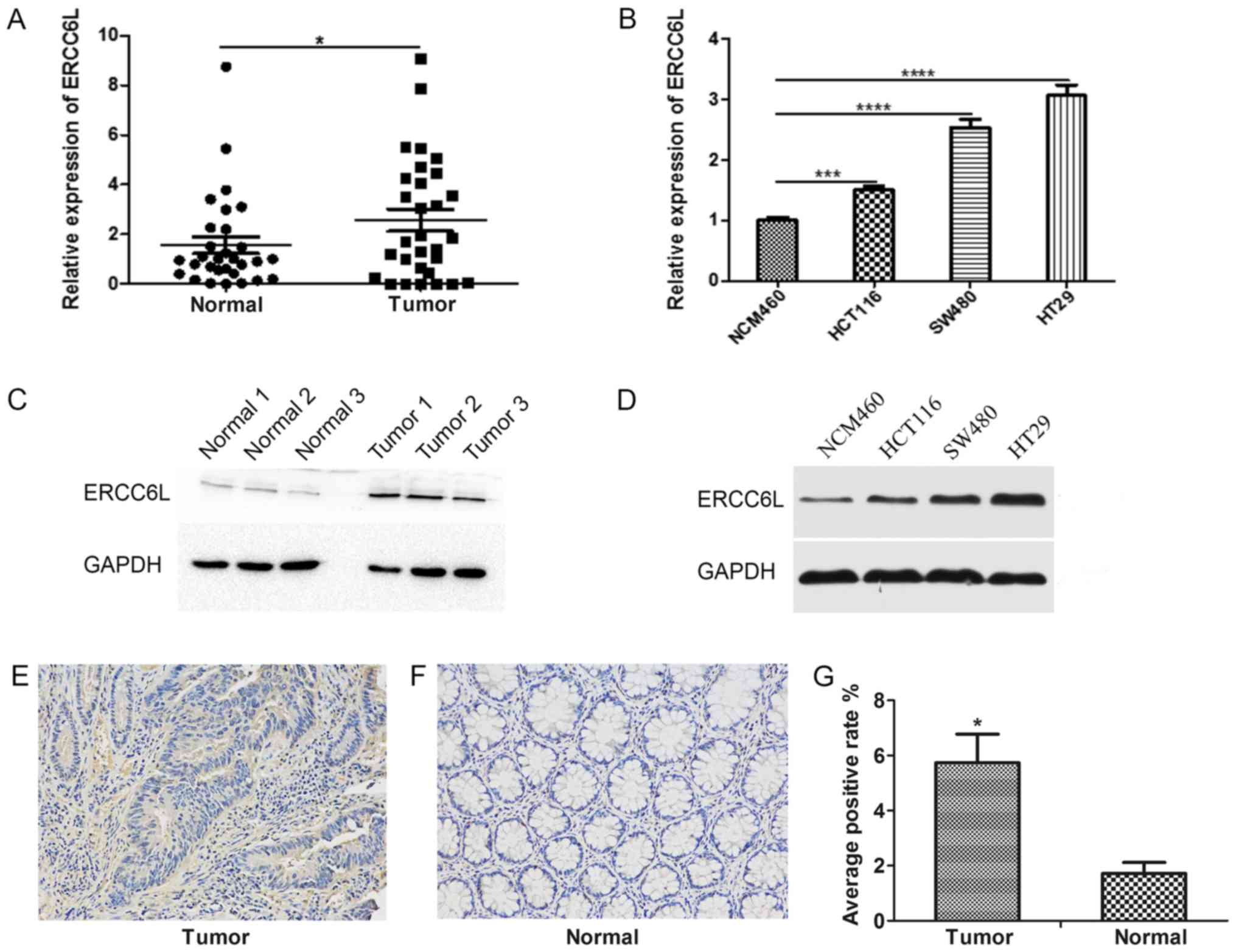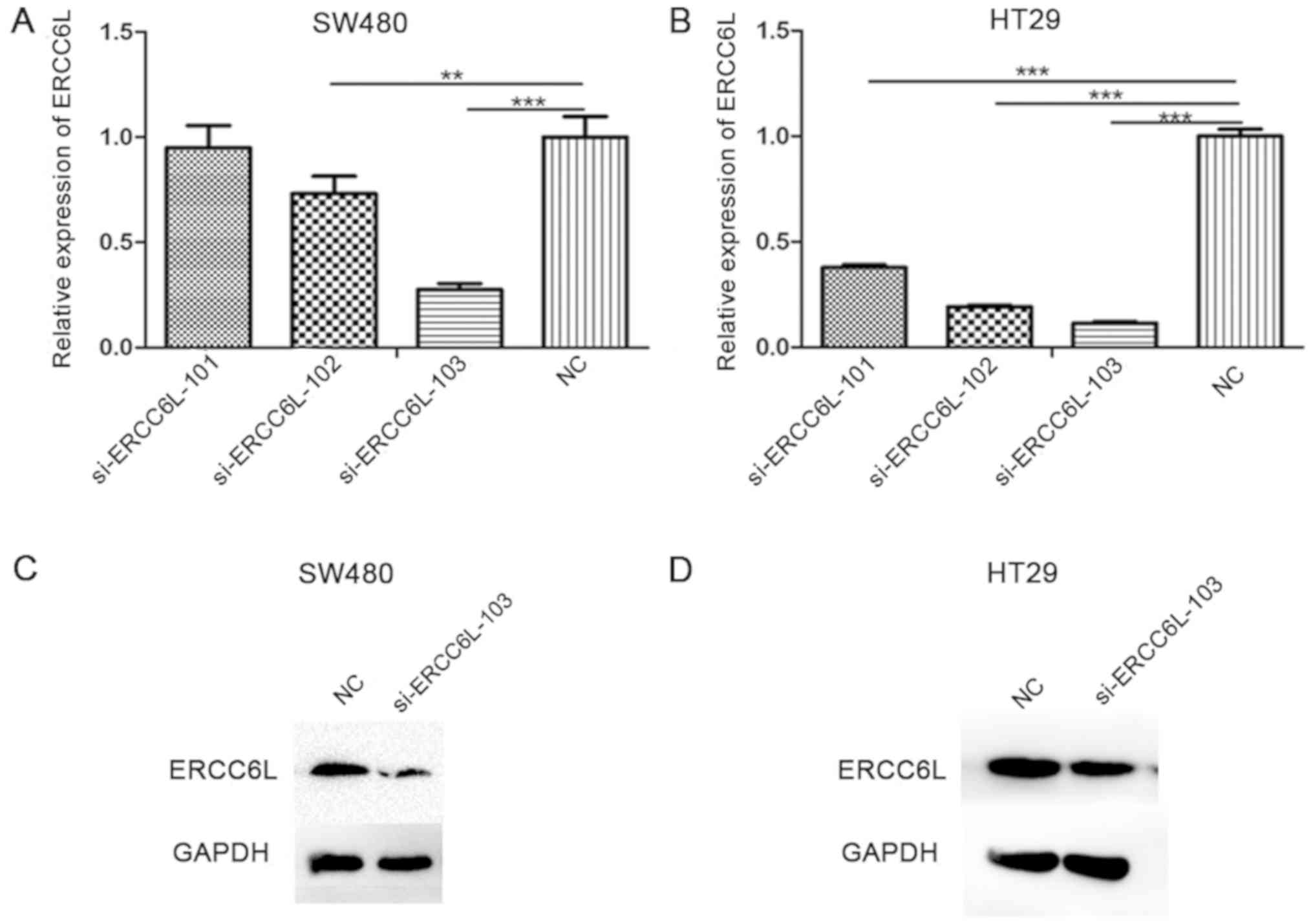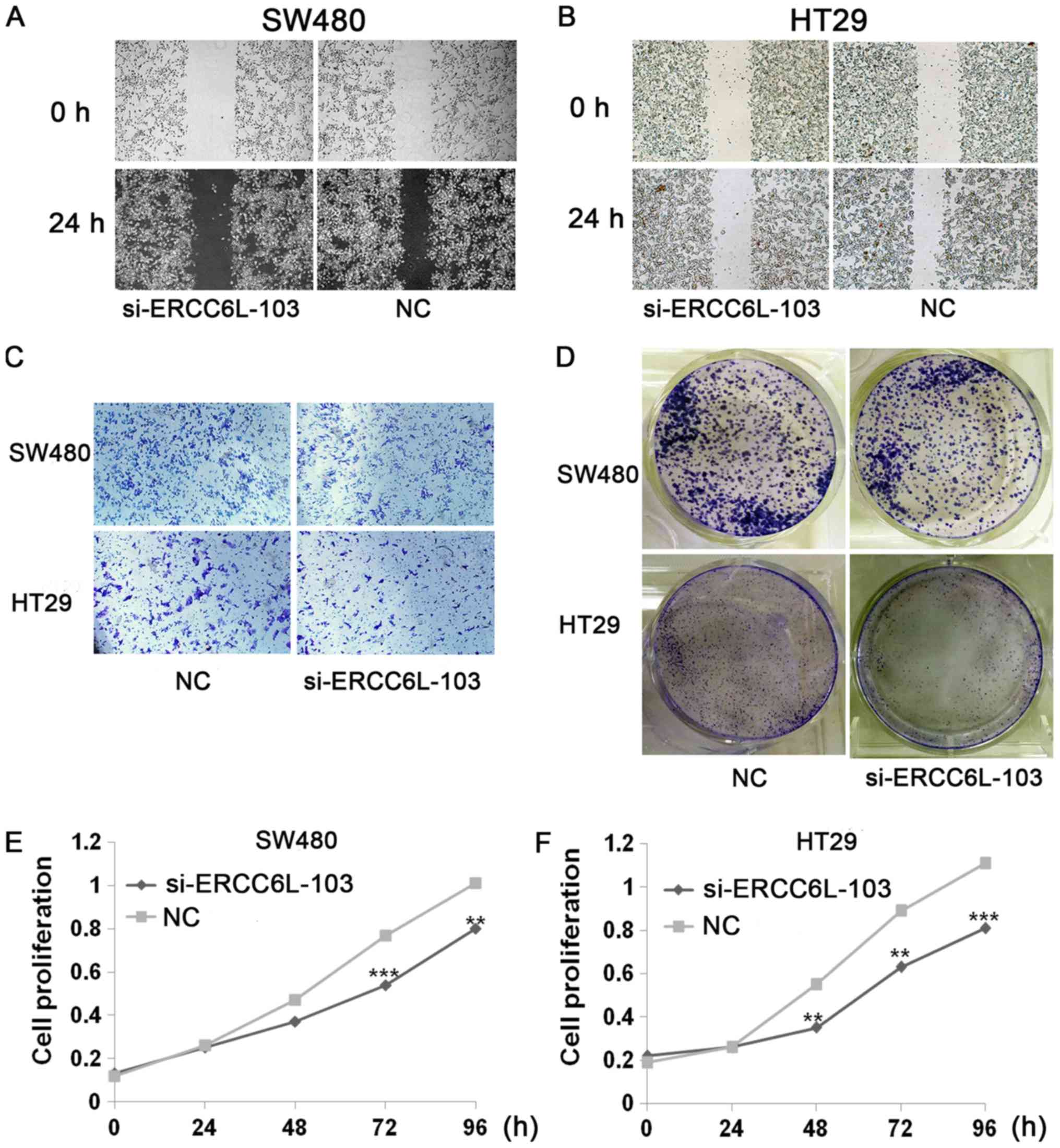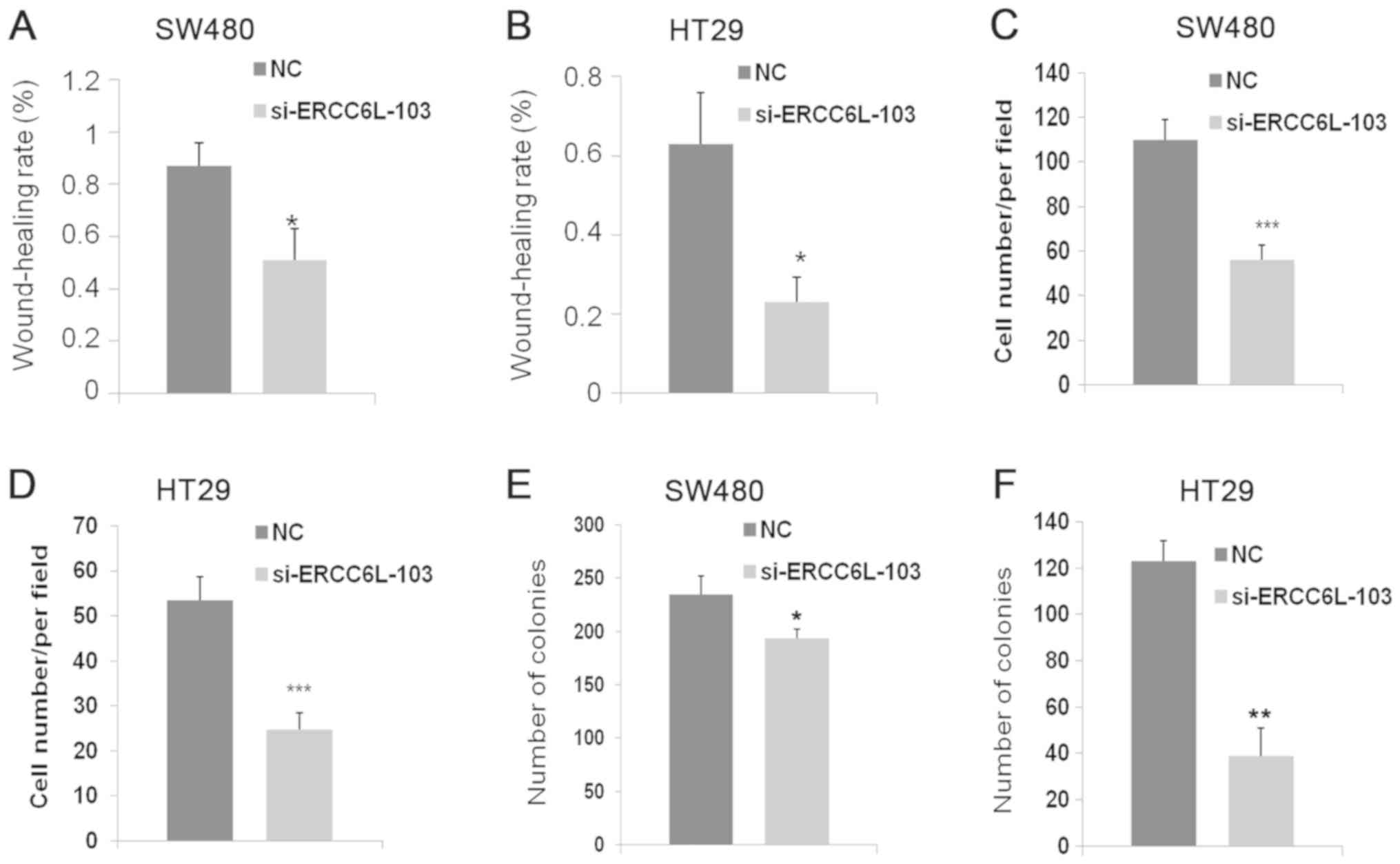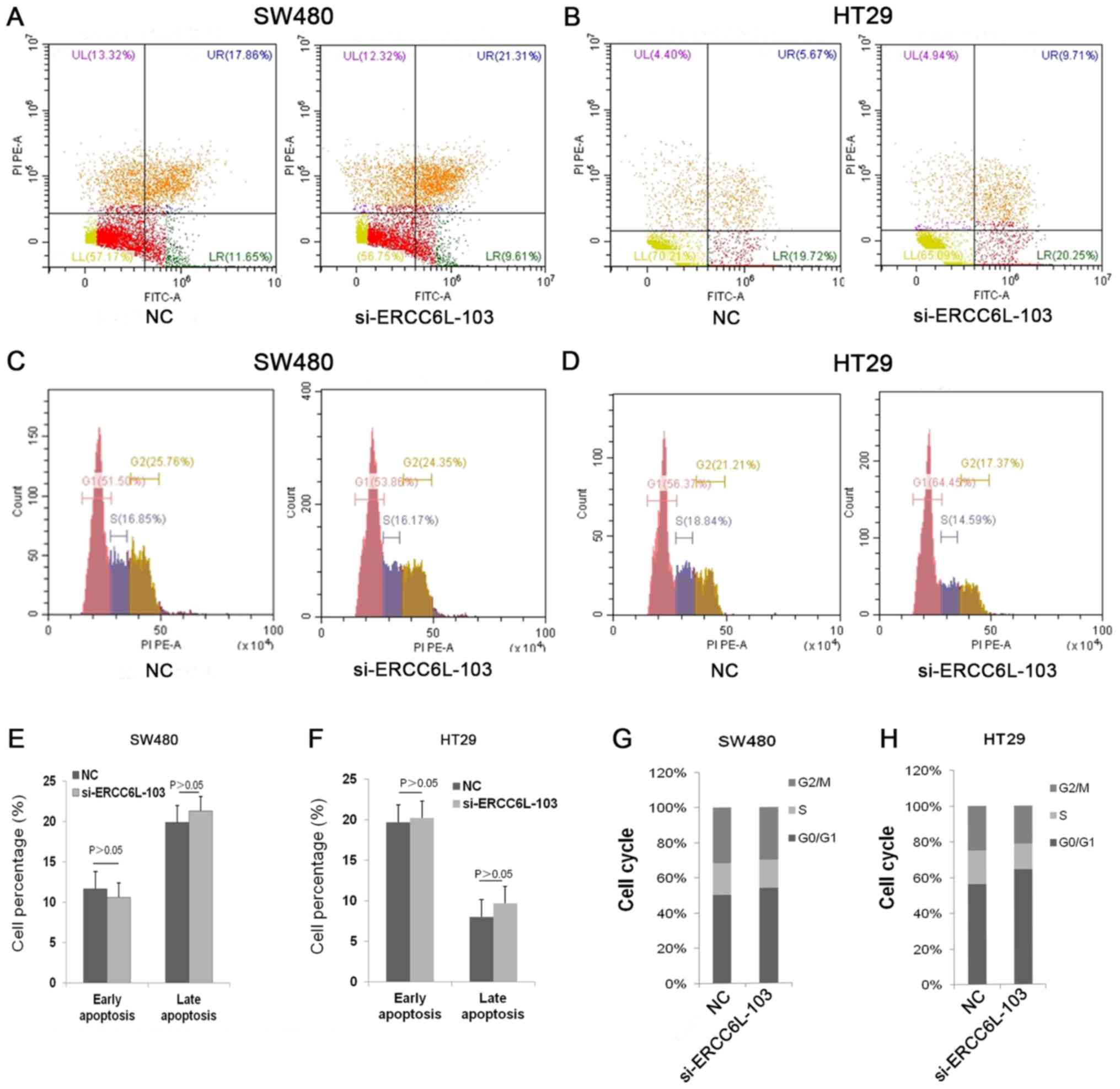|
1
|
Jemal A, Bray F, Center MM, Ferlay J, Ward
E and Forman D: Global cancer statistics. CA Cancer J Clin.
61:69–90. 2011. View Article : Google Scholar : PubMed/NCBI
|
|
2
|
Siegel R, Miller K and Jemal A: Cancer
statistics, 2018. CA Cancer J Clin. 68:7–30. 2018. View Article : Google Scholar : PubMed/NCBI
|
|
3
|
Chen W, Zheng R, Baade PD, Zhang S, Zeng
H, Bray F, Jemal A, Yu XQ and He J: Cancer statistics in China,
2015. CA Cancer J Clin. 66:115–132. 2016. View Article : Google Scholar : PubMed/NCBI
|
|
4
|
Maurel J and Postigo A: Prognostic and
predictive biomarkers in colorectal cancer. From the preclinical
setting to clinical practice. Curr Cancer Drug Targets. 15:703–715.
2015. View Article : Google Scholar : PubMed/NCBI
|
|
5
|
Schreuders EH, Ruco A, Rabeneck L, Schoen
RE, Sung JJ, Young GP and Kuipers EJ: Colorectal cancer screening:
A global overview of existing programmes. Gut. 64:1637–1649. 2015.
View Article : Google Scholar : PubMed/NCBI
|
|
6
|
Dickinson BT, Kisiel J, Ahlquist DA and
Grady WM: Molecular markers for colorectal cancer screening. Gut.
64:1485–1494. 2015. View Article : Google Scholar : PubMed/NCBI
|
|
7
|
Xu Y, Chen X and Li Y: Ercc6l, a gene of
SNF2 family, may play a role in the teratogenic action of alcohol.
Toxicol Lett. 157:233–239. 2005. View Article : Google Scholar : PubMed/NCBI
|
|
8
|
Zhao Z, Zhang G and Li W: Elevated
expression of ERCC6 confers resistance to 5-fluorouracil and is
associated with poor patient survival in colorectal cancer. DNA
Cell Biol. 36:781–786. 2017. View Article : Google Scholar : PubMed/NCBI
|
|
9
|
Nielsen CF, Huttner D, Bizard AH, Hirano
S, Li TN, Palmai-Pallag T, Bjerregaard VA, Liu Y, Nigg EA, Wang LH
and Hickson ID: PICH promotes sister chromatid disjunction and
co-operates with topoisomerase II in mitosis. Nat Commun.
6:89622015. View Article : Google Scholar : PubMed/NCBI
|
|
10
|
Baumann C, Körner R, Hofmann K and Nigg
EA: PICH, a centromere-associated SNF2 family ATPase, is regulated
by Plk1 and required for the spindle checkpoint. Cell. 128:101–114.
2007. View Article : Google Scholar : PubMed/NCBI
|
|
11
|
Chen XG, Li Y, Zang MX, Pei XR, Xu YJ and
Gao LF: cDNA cloning and expression analysis of mouse gene encoding
the protein Ercc61 which is a novel member of SNF2 family. Prog
Biochem Biophys. 31:443–448. 2004.
|
|
12
|
Santamaria A, Neef R, Eberspächer U, Eis
K, Husemann M, Mumberg D, Prechtl S, Schulze V, Siemeister G,
Wortmann L, et al: Use of the novel Plk1 inhibitor
ZK-thiazolidinone to elucidate functions of Plk1 in early and late
stages of mitosis. Mol Biol Cell. 18:4024–4036. 2007. View Article : Google Scholar : PubMed/NCBI
|
|
13
|
Pu SY, Yu Q, Wu H, Jiang JJ, Chen XQ, He
YH and Kong QP: ERCC6L, a DNA helicase, is involved in cell
proliferation and associated with survival and progress in breast
and kidney cancers. Oncotarget. 8:42116–42124. 2017. View Article : Google Scholar : PubMed/NCBI
|
|
14
|
Livak KJ and Schmittgen TD: Analysis of
relative gene expression data using real-time quantitative PCR and
the 2(-Delta Delta C(T)) method. Methods. 25:402–408. 2001.
View Article : Google Scholar : PubMed/NCBI
|
|
15
|
Fearon ER and Vogelstein B: A genetic
model for colorectal tumorigenesis. Cell. 61:759–767. 1990.
View Article : Google Scholar : PubMed/NCBI
|
|
16
|
Vogelstein B, Fearon ER, Hamilton SR, Kern
SE, Preisinger AC, Leppert M, Nakamura Y, White R, Smits AM and Bos
JL: Genetic alterations during colorectal tumor development. N Engl
J Med. 319:525–532. 1988. View Article : Google Scholar : PubMed/NCBI
|
|
17
|
Jagadish N, Parashar D, Gupta N, Agarwal
S, Purohit S, Kumar V, Sharma A, Fatima R, Topno AP, Shaha C and
Suri A: A-kinase anchor protein 4 (AKAP4) a promising therapeutic
target of colorectal cancer. J Exp Clin Cancer Res. 34:1422015.
View Article : Google Scholar : PubMed/NCBI
|
|
18
|
Mhaidat NM, Alzoubi KH and Abushbak A:
X-box binding protein 1 (XBP-1) enhances colorectal cancer cell
invasion. J Chemother. 27:167–173. 2015. View Article : Google Scholar : PubMed/NCBI
|
|
19
|
Zhou FF, Xie W, Chen SQ, Wang XK, Liu Q,
Pan XK, Su F and Feng MH: SLC38A1 promotes proliferation and
migration of human colorectal cancer cells. J Huazhong Univ Sci
Technolog Med Sci. 37:30–36. 2017. View Article : Google Scholar : PubMed/NCBI
|
|
20
|
Gil-Raga M, Jantus-Lewintre E, Gallach S,
Giner-Bosch V, Frangi-Caregnato A, Safont-Aguilera MJ,
Garde-Noguera J, Zorraquino-Pina E, García-Martínez M and
Camps-Herrero C: Molecular subtypes in early colorectal cancer
associated with clinical features and patient prognosis. Clin
Transl Oncol. 20:1422–1429. 2018. View Article : Google Scholar : PubMed/NCBI
|
|
21
|
Liu J, Deng N, Xu Q, Sun L, Tu H, Wang Z,
Xing C and Yuan Y: Polymorphisms of multiple genes involved in NER
pathway predict prognosis of gastric cancer. Oncotarget.
7:48130–48142. 2016.PubMed/NCBI
|
|
22
|
Xu Q, Liu JW, He CY, Sun LP, Gong YH, Jing
JJ, Xing CZ and Yuan Y: The interaction effects of pri-let-7a-1
rs10739971 with PGC and ERCC6 gene polymorphisms in gastric cancer
and atrophic gastritis. PLoS One. 9:e892032014. View Article : Google Scholar : PubMed/NCBI
|
|
23
|
Taghdiri M, Dastsooz H, Fardaei M,
Mohammadi S, Farazi Fard MA and Faghihi MA: A novel mutation in
ERCC8 gene causing cockayne syndrome. Front Pediatr. 5:1692017.
View Article : Google Scholar : PubMed/NCBI
|
|
24
|
Xie H, Li X, Peng J, Chen Q, Gao Z, Song
X, Li W, Xiao J, Li C, Zhang T, et al: A complex intragenic
rearrangement of ERCC8 in Chinese siblings with Cockayne syndrome.
Sci Rep. 7:442712017. View Article : Google Scholar : PubMed/NCBI
|
|
25
|
He C, Sun M, Wang G, Yang Y, Yao L and Wu
Y: Two novel mutations in ERCC6 cause Cockayne syndrome B in a
Chinese family. Mol Med Rep. 15:3957–3962. 2017. View Article : Google Scholar : PubMed/NCBI
|
|
26
|
Truta A, Popon TA, Saraci G, Ghervan L and
Pop IV: Novel non invasive diagnostic strategies in bladder cancer.
Clujul Med. 89:187–192. 2016.PubMed/NCBI
|
|
27
|
Kurasawa Y and Yu-Lee LY: PICH and
cotargeted Plk1 coordinately maintain prometaphase chromosome arm
architecture. Mol Biol Cell. 21:1188–1199. 2010. View Article : Google Scholar : PubMed/NCBI
|
|
28
|
Leng M, Besusso D, Jung SY, Wang Y and Qin
J: Targeting Plk1 to chromosome arms and regulating chromosome
compaction by the PICH ATPase. Cell Cycle. 7:1480–1489. 2008.
View Article : Google Scholar : PubMed/NCBI
|
|
29
|
Ke Y, Huh JW, Warrington R, Li B, Wu N,
Leng M, Zhang J, Ball HL, Li B and Yu H: PICH and BLM limit histone
association with anaphase centromeric DNA threads and promote their
resolution. EMBO J. 30:3309–3321. 2011. View Article : Google Scholar : PubMed/NCBI
|
|
30
|
Kaulich M, Cubizolles F and Nigg EA: On
the regulation, function, and localization of the DNA-dependent
ATPase PICH. Chromosoma. 121:395–408. 2012. View Article : Google Scholar : PubMed/NCBI
|
|
31
|
Ma X, Wang L, Huang, Li Y, Yang D, Li T,
Li F, Sun L, Wei H, He K, et al: Polo-like kinase 1 coordinates
biosynthesis during cell cycle progression by directly activating
pentose phosphate pathway. Nat Commun. 8:15062017. View Article : Google Scholar : PubMed/NCBI
|
|
32
|
Helmke C, Becker S and Strebhardt K: The
role of Plk3 in oncogenesis. Oncogene. 35:135–147. 2016. View Article : Google Scholar : PubMed/NCBI
|
|
33
|
Yen TJ: Polo delivers a PICH to the
kinetochore. Cell. 128:20–21. 2007. View Article : Google Scholar : PubMed/NCBI
|
|
34
|
Baines AT, Xu D and Der CJ: Inhibition of
Ras for cancer treatment: The search continues. Future Med Chem.
3:1787–1808. 2011. View Article : Google Scholar : PubMed/NCBI
|
|
35
|
Sclafani F, Gullo G, Sheahan K and Crown
J: BRAF mutations in melanoma and colorectal cancer: A single
oncogenic mutation with different tumour phenotypes and clinical
implications. Crit Rev Oncol Hematol. 87:55–68. 2013. View Article : Google Scholar : PubMed/NCBI
|
|
36
|
Zhang J, Zheng J, Yang Y, Lu J, Gao J, Lu
T, Sun J, Jiang H, Zhu Y, Zheng Y, et al: Molecular spectrum of
KRAS, NRAS, BRAF and PIK3CA mutations in Chinese colorectal cancer
patients: analysis of 1,110 cases. Sci Rep. 5:186782015. View Article : Google Scholar : PubMed/NCBI
|
|
37
|
McAllister F, Bailey JM, Alsina J, Nirschl
CJ, Sharma R, Fan H, Rattigan Y, Roeser JC, Lankapalli RH, Zhang H,
et al: Oncogenic Kras activates a hematopoietic-to-epithelial IL-17
signaling axis in preinvasive pancreatic neoplasia. Cancer Cell.
25:621–637. 2014. View Article : Google Scholar : PubMed/NCBI
|
|
38
|
Nguyen-Ngoc T, Bouchaab H, Adjei AA and
Peters S: BRAF alterations as therapeutic targets in non-small-cell
lung cancer. J Thorac Oncol. 10:1396–1403. 2015. View Article : Google Scholar : PubMed/NCBI
|



